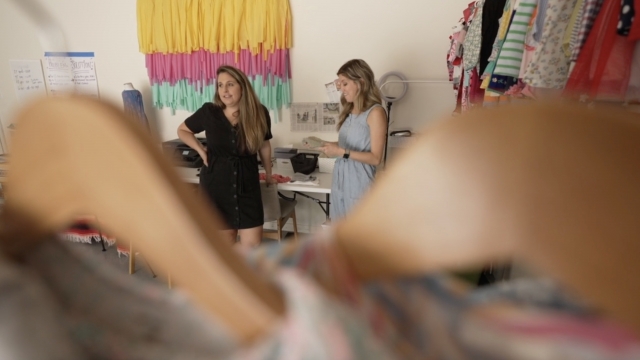Considering how fast kids grow, parents can sometimes feel overwhelmed with stacks upon stacks of clothing. Two mothers are working out of their garage in San Antonio to help prevent overconsumption.
Kara Livingston and Nicole Boynton are the owners of Hand Me Up.
From high school to motherhood, they're now, as they put it, 'living the dream' cleaning and sorting children's clothes every day.
"We curate secondhand kids clothes and put them into mix-and-match bundles and have them shipped straight to you," Boynton said.
"You can come to our website and essentially all you have to do is put in your kid's size, what climate you want, basically hot or cold clothes and their gender," Livingston said.
For $47, including shipping, you get seven items of secondhand clothing. If you send them a bag back, let's say of clothes that no longer fit your child, you get $10 off. If you sign up for monthly orders, it's $30.
"Some of the sizes on our website are in months," Livingston said. "There's a time period where they're growing really, really fast and the crazy thing about waste and overconsumption is like they're not being worn but like three to six months. So there's more life in those textiles, like they can still be used."
The idea came to these mothers because they say they got really interested in ethical fashion. They say they wanted to make sure they weren't overbuying clothes.
"Our whole goal is to give families a safe space where they can, like send their clothes and know that we're going to do the best we can to get them to somebody that needs them and not into a trash can," Boynton said.
The National Institute of Standards and Technology is a government agency with a team dedicated to researching the circular economy of textiles. Kelsea Schumacher is one of the researchers.
"Our definition of a circular economy at NIST is keeping atoms and molecules in the economy for as long as possible and out of unwanted things such as the environment, landfills, incinerators, etc," Schumacher said. "So that means extending the life of existing products in the economy through such practices as reuse, repair, refurbishment, and then recycling as a last resort."
According to a report from the Environmental Protection Agency, only 15 percent of textiles, like clothes, get reused. The rest is often thrown away.
Schumacher says textiles is one of the fastest growing waste sectors in the U.S. If you love shopping, Livingston and Boynton say shopping for clothes isn't over, the game has just changed a little.
If you have clothes past the point of being reused, textile researchers say you might be able to recycle the fibers. Simply search online to see what collection systems are in your area.





